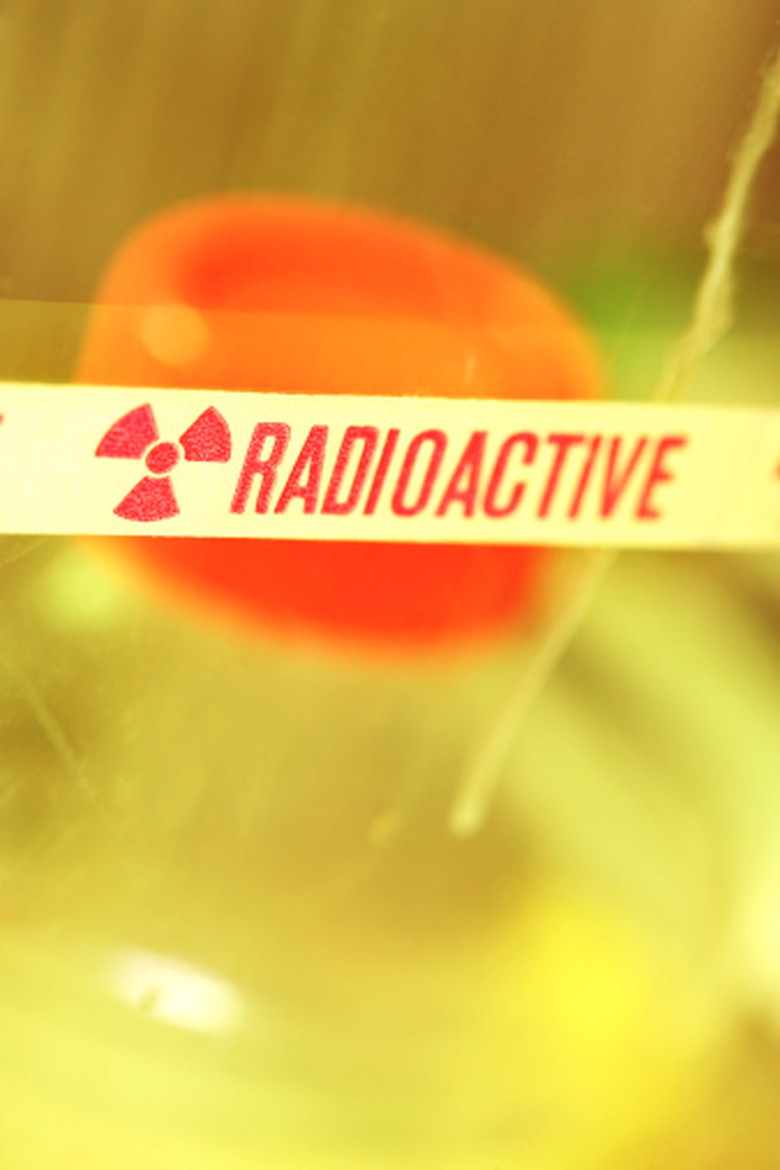What Are Radioactive Tracers?
Practitioners of nuclear medicine utilize small amounts of radioactive isotopes for diagnostic purposes. These isotopes, called radioactive tracers, enter the body by injection or ingestion. They emit a signal, usually gamma rays, that can be identified. The medical provider targets a particular organ or body part. The tracer provides valuable information that assists in making a diagnosis.
Process
Process
Radioactive tracers utilize the positive qualities of radioactivity, the ability to emit a signal, while minimizing the negative effects. Isotopes use elements with a short half-life to reduce the dangers of radioactive exposure to the patient. A half-life represents the amount of time it takes for one-half of a substance's radioactivity to decay. For example, a material with a half-life of six hours will lose half of its radioactivity in six hours and then another one-half at the 12-hour mark, leaving one-fourth of its strength. The shorter the half-life the less radioactive exposure.
Material
Material
The most common radioactive isotope used in radioactive tracers is technetium-99m, used in almost 30 million procedures in 2008, representing 80 percent of all nuclear medicine procedures, according to World Nuclear Association. It is an isotope of an artificial element, technetium, with a half-life of six hours, which provides enough time to perform the necessary diagnostic procedures, but provides patient safety. It is versatile and can be targeted to a specific organ or body part and emits gamma rays that provide the necessary information. Other radioactive tracers include iodine-131 for thyroid conditions, iron-59 iron to study metabolism in the spleen and potassium-42 for potassium in the blood.
CT Scan
CT Scan
A major use of radioactive tracers involves computed X-ray tomography or CT scans. These scans constitute approximately 75 percent of medical procedures with tracers. The radioactive tracer produces gamma rays or single photons that a gamma camera detects. Emissions come from different angles and a computer uses them to produce an image. The treating physician orders a CT scan that targets a specific area of the body, like the neck or chest, or a specific organ, like the thyroid.
PET
PET
Positron emission tomography, or PET, represents the latest technology to use radioactive tracers. It provides a more precise image and is used frequently in oncology with Flourine-18 as the tracer. PET is also used in cardiac and brain imaging with carbon-11 and nitrogen-13 radioactive tracers. Another innovation involves the combination of PET and CT into two images known as PETCT.
Cite This Article
MLA
Alley, Robert. "What Are Radioactive Tracers?" sciencing.com, https://www.sciencing.com/radioactive-tracers-8330110/. 24 April 2017.
APA
Alley, Robert. (2017, April 24). What Are Radioactive Tracers?. sciencing.com. Retrieved from https://www.sciencing.com/radioactive-tracers-8330110/
Chicago
Alley, Robert. What Are Radioactive Tracers? last modified March 24, 2022. https://www.sciencing.com/radioactive-tracers-8330110/
